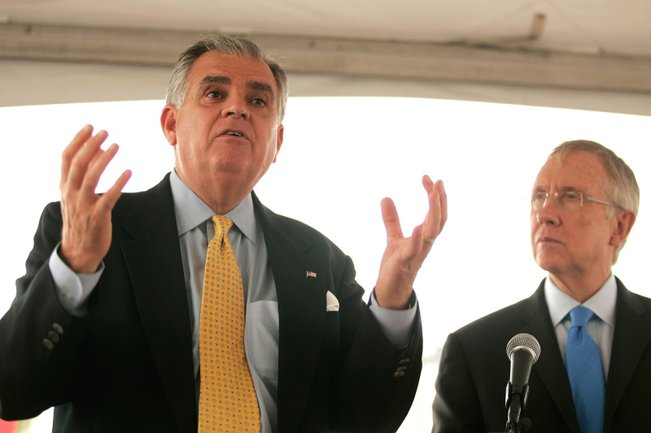Link: Press Release from Authority: Duarte Mayor John Fasana Joins Metro Gold Line Foothill Extension Construction Authority Board « I Will Ride Blog
Press Release from Authority: Duarte Mayor John Fasana Joins Metro Gold Line Foothill Extension Construction Authority Board
Posted by Albert
MONROVIA, July 17, 2009 – Duarte Mayor John Fasana was appointed to the Metro Gold Line Foothill Extension Construction Authority board to serve as the representative of the Los Angeles County Metropolitan Transportation Authority, Chief Executive Officer Habib Balian said today.
Fasana, who has represented the 30 San Gabriel Valley cities on the Metro board since its inception, was appointed to the Foothill Extension board by Metro Chairman and Glendale City Councilman Ara Najarian.
“Mayor Fasana has been the Foothill Extension’s staunchest representative at Metro and worked hard to ensure that Metro included funding for the line in Measure R and the Long Range Transportation Plan,” Balian said. “We look forward to his leadership on the Construction Authority board as we move toward construction of the line and keeping us on schedule to open to Azusa in 2013.”
Fasana will be sworn in at the July 22 Construction Authority board meeting.
“The Construction Authority has done a great job of getting the Foothill Extension ready to go, and now it is up Metro to fund it,” Fasana said. “The Extension is an economic stimulus project for the San Gabriel Valley and has the potential to create thousands of jobs and bring our economies back to life. I look forward to working the Construction Authority board to break ground next year.”
Fasana replaced Vivien Bonzo. “On behalf of the Construction Authority, I would like to thank Vivien for her service and commitment to the Gold Line since the Authority’s 1999 inception,” Balian said.
The Metro board is scheduled to consider its Long Range Transportation Plan at its July 23 board meeting. The draft includes $743 million, beginning in 2010, for construction of Phase 2A of the Foothill Extension. If approved, the Construction Authority can begin work on the Pasadena-to-Azusa section as soon as June 2010 and remain on schedule to operate the extension in 2013.
Construction of the Foothill Extension will create an estimated 30,000 direct, indirect and induced jobs, and is expected to take less than three years. The Foothill Extension will add 3.3 million passengers a year to the Gold Line and generate more than $2.7 million in fares. With the opening of the Eastside Extension and Foothill Extension, the Gold Line will carry an estimated 55,000 riders every day.
###
Contact: Eric Moses
(213) 438-1755
eric.moses@consensusinc.com












 Yesterday was a big day for Los Angeles transportation. Metro, the county's behemoth transit agency, officially announced their partnership with Google. But the county is large and there are various partner agencies throughout. Here's a sampling, with more to come in later days, of where other city transit systems stand with Google Transit:
Yesterday was a big day for Los Angeles transportation. Metro, the county's behemoth transit agency, officially announced their partnership with Google. But the county is large and there are various partner agencies throughout. Here's a sampling, with more to come in later days, of where other city transit systems stand with Google Transit:
